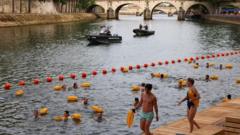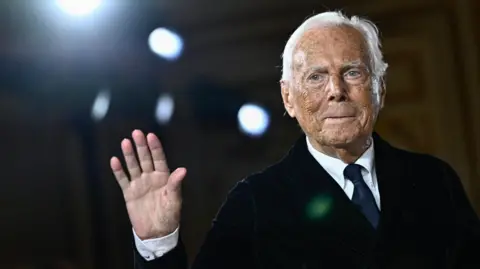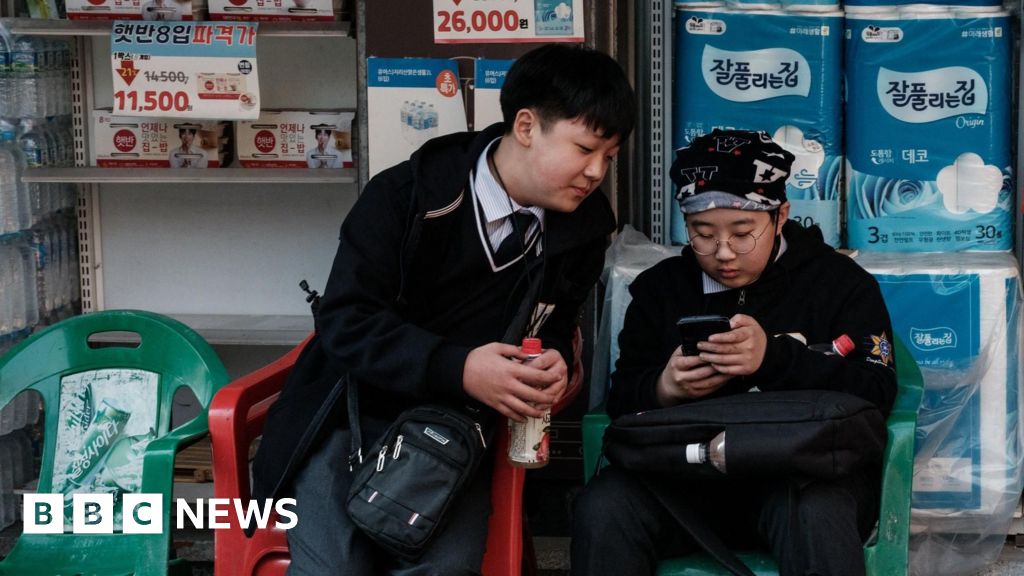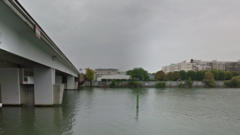The River Seine in Paris has officially reopened for public swimming for the first time in a century, making headlines as a significant achievement ahead of the 2024 Olympic Games. Beginning Saturday morning, eager swimmers gathered to take the plunge at one of three designated locations under bright skies.
This landmark reopening was facilitated by extensive cleaning efforts and infrastructure investments, totaling over €1.4 billion, aimed at revitalizing the water quality in the Seine. These enhancements were necessary to prepare the river for events such as triathlons and marathon swimming during the upcoming Olympics.
The designated swimming areas located near the iconic Eiffel Tower, the historic Notre Dame Cathedral, and a third site in eastern Paris are equipped with amenities including changing rooms, showers, and beach-style furniture that accommodates about 300 visitors at once. With access granted to individuals aged 10 and older, the swimming zones will be operational for free until the end of August, supervised by lifeguards for safety.
The effort to reverse a swimming ban that lasted since 1923 dates back to 1988, when then-mayor Jacques Chirac first proposed the initiative. Significant clean-up operations have been underway over the past two decades, dramatically reducing harmful bacteria levels in the river which led to the swimming prohibition.
While concerns lingered about the water quality ahead of the Olympics, Paris Mayor Anne Hidalgo took daring steps to demonstrate the safety of swimming in the Seine, emphasizing the city's commitment to clean and accessible waters for all. With the Olympics approaching, public enthusiasm and accessibility to the Seine may pave the way for a tradition of urban swimming back in the heart of Paris.
This landmark reopening was facilitated by extensive cleaning efforts and infrastructure investments, totaling over €1.4 billion, aimed at revitalizing the water quality in the Seine. These enhancements were necessary to prepare the river for events such as triathlons and marathon swimming during the upcoming Olympics.
The designated swimming areas located near the iconic Eiffel Tower, the historic Notre Dame Cathedral, and a third site in eastern Paris are equipped with amenities including changing rooms, showers, and beach-style furniture that accommodates about 300 visitors at once. With access granted to individuals aged 10 and older, the swimming zones will be operational for free until the end of August, supervised by lifeguards for safety.
The effort to reverse a swimming ban that lasted since 1923 dates back to 1988, when then-mayor Jacques Chirac first proposed the initiative. Significant clean-up operations have been underway over the past two decades, dramatically reducing harmful bacteria levels in the river which led to the swimming prohibition.
While concerns lingered about the water quality ahead of the Olympics, Paris Mayor Anne Hidalgo took daring steps to demonstrate the safety of swimming in the Seine, emphasizing the city's commitment to clean and accessible waters for all. With the Olympics approaching, public enthusiasm and accessibility to the Seine may pave the way for a tradition of urban swimming back in the heart of Paris.




















